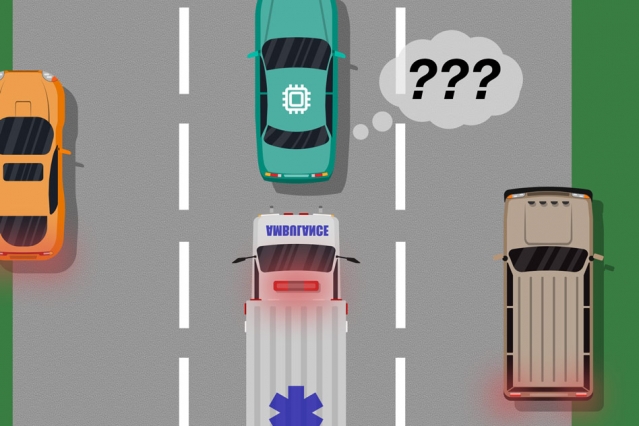The city of Amsterdam envisions a future where fleets of autonomous boats cruise its many canals to transport goods and people, collect trash, or self-assemble into floating stages and bridges. To further that vision, MIT researchers have given new capabilities to their fleet of robotic boats — which are being developed as part of an…
Bringing Human-Like Reasoning to Driverless Car Navigation
With aims of bringing more human-like reasoning to autonomous vehicles, MIT researchers have created a system that uses only simple maps and visual data to enable driverless cars to navigate routes in new, complex environments. Human drivers are exceptionally good at navigating roads they haven’t driven on before, using observation and simple tools. We simply…
How to Tell Whether Machine-Learning Systems Are Robust Enough for the Real World
MIT researchers have devised a method for assessing how robust machine-learning models known as neural networks are for various tasks, by detecting when the models make mistakes they shouldn’t. Convolutional neural networks (CNNs) are designed to process and classify images for computer vision and many other tasks. But slight modifications that are imperceptible to the…
Wireless Movement-Tracking System Could Collect Health and Behavioral Data
We live in a world of wireless signals flowing around us and bouncing off our bodies. MIT researchers are now leveraging those signal reflections to provide scientists and caregivers with valuable insights into people’s behavior and health. The system, called Marko, transmits a low-power radio-frequency (RF) signal into an environment. The signal will return to…
Securing the “Internet of Things” in the Quantum Age
MIT researchers have developed a novel cryptography circuit that can be used to protect low-power “internet of things” (IoT) devices in the coming age of quantum computing. Quantum computers can in principle execute calculations that today are practically impossible for classical computers. Bringing quantum computers online and to market could one day enable advances in…
Robots Track Moving Objects with Unprecedented Precision
A novel system developed at MIT uses RFID tags to help robots home in on moving objects with unprecedented speed and accuracy. The system could enable greater collaboration and precision by robots working on packaging and assembly, and by swarms of drones carrying out search-and-rescue missions. In a paper being presented next week at the…
Giving Keener “Electric Eyesight” to Autonomous Vehicles
Autonomous vehicles relying on light-based image sensors often struggle to see through blinding conditions, such as fog. But MIT researchers have developed a sub-terahertz-radiation receiving system that could help steer driverless cars when traditional methods fail. Sub-terahertz wavelengths, which are between microwave and infrared radiation on the electromagnetic spectrum, can be detected through fog and…
Converting Wi-Fi Signals to Electricity with New 2-D Materials
Imagine a world where smartphones, laptops, wearables, and other electronics are powered without batteries. Researchers from MIT and elsewhere have taken a step in that direction, with the first fully flexible device that can convert energy from Wi-Fi signals into electricity that could power electronics. Devices that convert AC electromagnetic waves into DC electricity are…
Filling the Gaps in a Patient’s Medical Data
MIT researchers have developed a model that can assimilate multiple types of a patient’s health data to help doctors make decisions with incomplete information. The field of “predictive analytics” holds promise for many health care applications. Machine learning models can be trained to look for patterns in patient data to predict a patient’s risk for…
Identifying Artificial Intelligence “Blind Spots”
A novel model developed by MIT and Microsoft researchers identifies instances in which autonomous systems have “learned” from training examples that don’t match what’s actually happening in the real world. Engineers could use this model to improve the safety of artificial intelligence systems, such as driverless vehicles and autonomous robots. The AI systems powering driverless…










